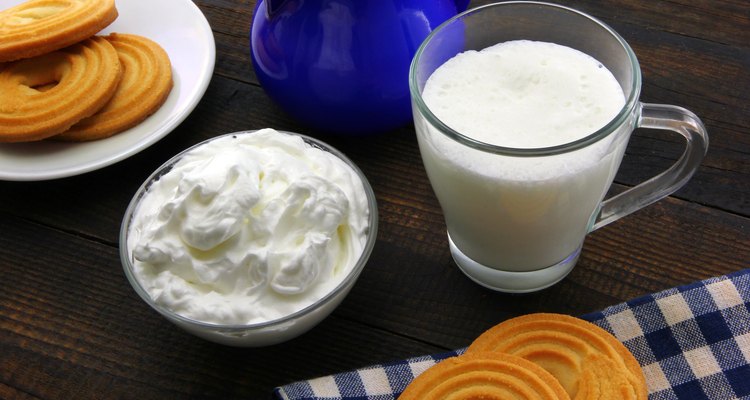
The expression "cream rises to the top" comes from the literal occurrence of milk fat surfacing when non-homogenized whole milk rests undisturbed. With a buttery taste and silky texture, this cream adds richness to cooked and baked foods. Though similarly thick, buttermilk, which is made by culturing non- or low-fat milk, contains little fat. You can use cream in place of buttermilk, but the substitution affects the leavening power of baking soda and the taste of the food.
Cream vs. Buttermilk
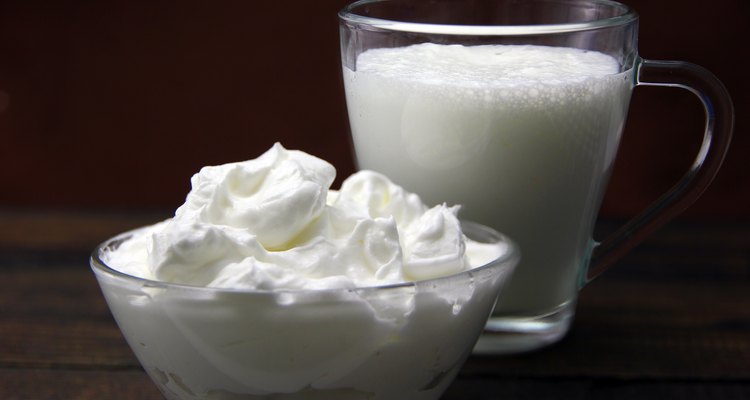
Cream varies in richness depending on the quantity of butterfat, which can range from 10 to 48 percent. More fat means a richer taste. Buttermilk contains little to no fat, although the thickness still gives foods a creamy mouthfeel. Buttermilk also adds a slightly sour taste to baked goods and other foods. Acidic buttermilk reacts with baking soda, providing leavening power, while cream does not.
Benefits of Cream

Cream does not help leaven baked goods, but it does add richness. The moisture and high fat content help create a soft crumb. Heavy, whipping, double, half-and-half and single creams are the most common types and vary in the amount of fat they contain -- from 10 to 48 percent. You can use clotted cream and creme fraiche in baking, but they are more commonly served as a condiment. Home cooks often have cream in the fridge, making it an easier go-to option. Choose a pasteurized rather than an ultra-pasteurized cream if possible, as the high heat associated with ultra-pasteurization affects the taste.
Substitution Basics

For soups, salad dressings and non-baked goods, replace buttermilk with cream in a 1:1 ratio. In baked goods, substitute baking powder for any baking soda in the recipe by replacing the quantity of baking soda with four times the amount of baking powder to reproduce the leavening quality of buttermilk.
Souring Cream
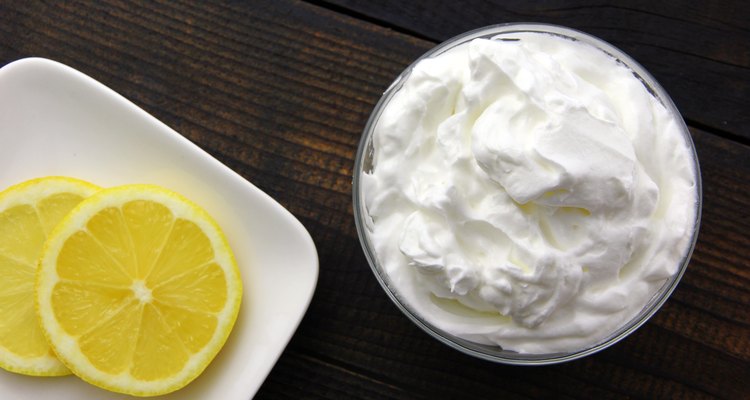
Because too much baking powder can cause baked goods to rise too quickly, some people prefer to stick with baking soda even with cream and adjust for the missing acidity. To use cream with baking soda, acidify the cream first. This step allows the cream to react with the baking soda, providing the leavening power, plus it gives foods the slight tang you get from buttermilk -- although less pronounced. You can sour cream by adding 1 tablespoon of lemon juice or vinegar to 1 cup of cream. Let it rest, covered with a clean cloth, for up to 10 minutes. Once it curdles, give it a quick stir and it's ready to use.
Related Articles
The Difference Between ...

Different Types of Whipping Cream
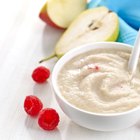
How Many Calories Are in Cream of Wheat?

Why Does Cream Turn Into Butter?

Differences Between Double Cream and ...

Heavy Cream vs. Milk in Baking

Can I Use Milk Instead of Heavy Cream ...
Cream vs. Creamer

How to Bring Cream to a Boil

How Long Does Whipping Cream Stay Fresh ...
Clotted Cream Vs. Double Cream

What Happens if I Forget to Refrigerate ...

Why Does Some Alcohol Curdle Cream?

Does Cream Spoil?

Can You Cook With Cream Cheese Instead ...

Low Sodium Substitute for Condensed ...

Can You Use Milk Instead of Cream for ...
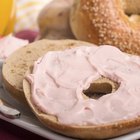
Calories in a Tablespoon of Cream Cheese

How to Make Scalded Cream

What Is Tretinoin Cream Used For?
References
Writer Bio
Rachel has worked professionally as a chef and writer on food since 2010. In addition to a Bachelor of Arts degree, she holds a diploma in classic culinary arts from the French Culinary Institute. She has an active interest in wine, fine dining and sustainable agriculture.
Photo Credits
Alexandra Cristina Negoita/Demand Media